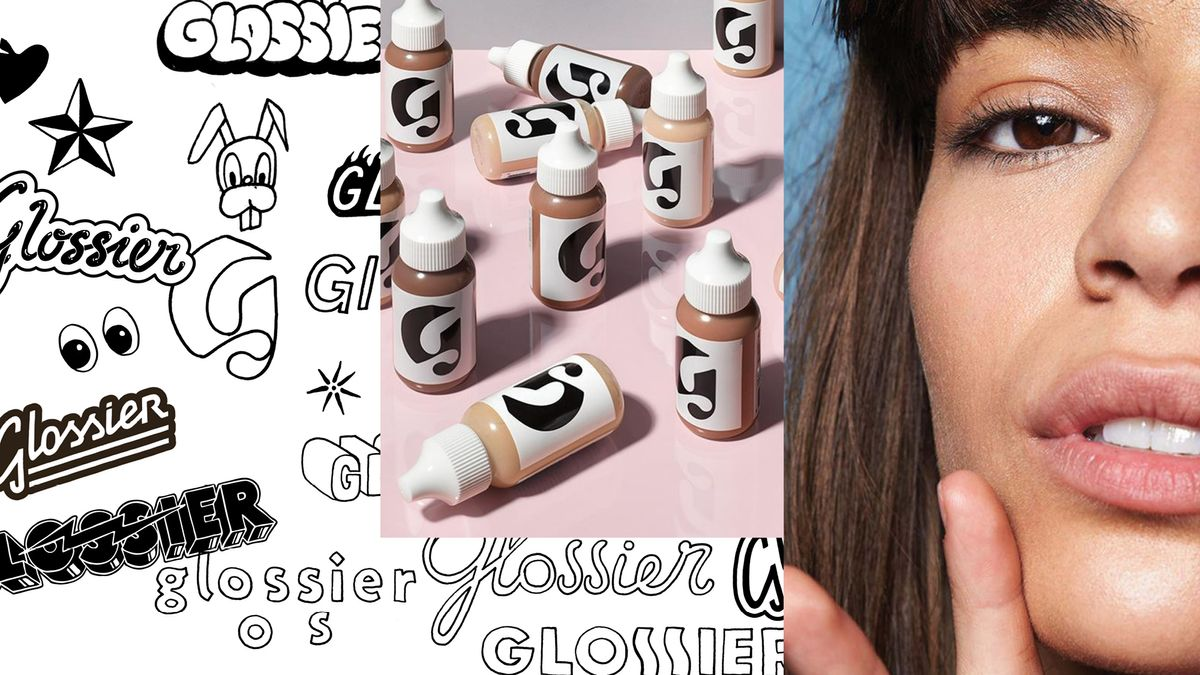It started with a brilliant idea – “Let’s get active on social media.” You created an Instagram, maybe a TikTok, and started posting. A few like rolled in. A comment here and there. But then… crickets.
That’s when most brands realize they’ve skipped a crucial step: the plan.
Social media isn’t just about posting pretty graphics or hopping on trends. It’s about building relationships, driving business goals, and standing out in a digital crowd that spends over 2 hours a day scrolling. With over 5 billion active users worldwide, you need more than good intentions to make an impact.
This guide will help you create a social media plan that looks good on paper and delivers results.
What Is a Social Media Plan, Really?
Think of your favorite road trip. Would you set off without directions? Probably not.
A social media plan is your roadmap. It details your goals, who you’re trying to reach, what content you’ll create, where you’ll post it, and how you’ll measure success.
But don’t confuse it with a strategy. If a plan is the map, the strategy is the reason you’re taking the journey in the first place.
| Plan | Strategy |
| Tactical, focused on execution | Visionary, focused on purpose |
| Answers: What? When? Where? How? | Answers: Why? |
| Updates regularly | Updates less frequently |
Having both means you’re not just driving – you’re headed somewhere that matters.
Who Needs to Be in the Room?
Let’s clarify: a social media plan isn’t a one-person project.
Picture this: Your social media manager is scheduling posts. The content team creates visuals and writes captions. Meanwhile, leadership is shaping the broader marketing vision. If these teams aren’t aligned, your audience will feel the disconnect.
Here’s who should help build your plan:
- Social Media Manager – The orchestrator
- Content Creators & Designers – The storytellers
- Leadership & Marketing Directors – The vision keepers
- Sales, HR, Customer Service – The people who know your audience best
When these roles collaborate, magic happens.
The Foundation That Holds Everything Up
Here’s where most brands go wrong: they post content without knowing what they’re trying to achieve.
You need clear, measurable goals that guide every caption, every campaign, every click.
Use frameworks like:
- SMART (Specific, Measurable, Achievable, Relevant, Time-bound)
- OKRs (Objectives and Key Results)
Sample goals:
- Grow LinkedIn leads by 30% in Q1
- Drive 10K monthly visits to your blog via Instagram
- Reduce customer support DMs by 40% through better Stories content
Each platform can support different goals, so map those carefully. Instagram might boost awareness, while LinkedIn nurtures leads. Know your outcomes before you invest your time.
Understand Who You’re Talking To
Would you speak to your grandmother the same way you talk to your gym buddy? Probably not.
That’s why audience research is so critical. To connect, you need to understand:
- What problems do they care about
- Where they hang out
- How they communicate
Ways to dig in:
- Social analytics (look at who’s engaging and why)
- Surveys and polls
- Customer interviews
- Build detailed personas
Demographics by platform (2025 snapshot):
- Facebook: Strong with ages 25–44, popular for communities and groups
- Instagram: 18–34, visual-first, lifestyle and shopping heavy
- TikTok: Gen Z and young Millennials, trend-driven, entertainment-first
- LinkedIn: 25–54 professionals, B2B, thought leadership content
- X/Twitter: 18–34, real-time news, commentary, and thought leadership
You’re not just selling products or services – you’re speaking to real people with real interests. Your plan should reflect that.
Learn From the Ones Doing It Right
Before you reinvent the wheel, look around. Who’s killing it in your space?
Let’s say you run a wellness brand. You notice that a competitor’s yoga reels are getting 10x the engagement of static posts. Or that a tech startup is gaining traction by using founder-led storytelling on LinkedIn.
Use tools like:
- BuzzSumo or Sprout Listening for trends
- Similarweb or SocialBlade for competitor benchmarks
- Manual audits (check posting frequency, tone, visual identity)
Copy? Never. Get inspired? Always.
Choose the Right Channels (Not All of Them)
Let’s simplify platform selection with a three-question checklist:
- Where is your audience already hanging out? If you’re targeting professionals, LinkedIn might be gold. Teen audiences? Think TikTok.
- What formats can your team consistently produce? Great at video? Choose platforms that favor reels and stories.
- Does your content style fit the culture of the platform? Quirky humor fits on TikTok, but industry insights are better for LinkedIn.
Instead of spreading thin, master 2–4 channels. Quality beats presence every time.
Optimization tips for setup:
- Branded profile and cover visuals
- SEO-ready bios with keywords and links
- Verified accounts to boost trust
- Activate platform features (Instagram Shop, LinkedIn Showcase Pages, TikTok Creator tools)
- Add tracking pixels (Meta Pixel, LinkedIn Insight Tag) to tie organic and paid campaigns together — a must if you’re running Social Media Advertising.
Content Planning: Where Ideas Become Reality
Imagine your content plan as a series on Netflix. Each episode (post) should support the storyline (brand message), fit the genre (voice), and engage your viewers (audience).
Break it down like this:
- Theme: Education, entertainment, promo, community
- Format: Video, carousel, meme, behind-the-scenes, infographic
- Tone: Empathetic? Bold? Friendly?
Then slot it into a weekly cadence that aligns with business goals. Think:
- Monday = Motivation
- Wednesday = Tips & How-To
- Friday = Community shoutouts or fun
Create in batches. Schedule in waves. Let your content calendar act like a streaming lineup.
Scheduling Like a Pro
No more random posting. Think rhythm and routine.
Start with a template calendar:
| Day | Platform | Content Type |
| Monday | Thought leadership | |
| Tuesday | Product carousel | |
| Wednesday | TikTok | Behind-the-scenes |
| Thursday | Customer testimonial | |
| Friday | Team story/fun post |
Once your calendar is outlined:
- Use Hootsuite, Notion, or even Google Sheets
- Plug in captions, images, and links
- Review weekly to stay agile with trends
Batching 2–4 weeks at once saves time and brain space.
Post frequency recommendations (2025 benchmarks):
- Facebook: 3–5x per week
- Instagram Feed: 3–4x per week; Stories daily
- TikTok: 4–6x per week for growth
- LinkedIn: 2–3x per week
- Twitter/X: 1–2x daily
Engagement Isn’t Optional – It’s Everything
Think of engagement like hosting a dinner party. You don’t just cook, serve, and walk away – you chat with guests, ask questions, and keep the vibe going.
Instead of a checklist, adopt this mindset:
- Be present: Respond fast, whether it’s love or complaints
- Be human: Use emojis, names, gifs – whatever fits your voice
- Be helpful: Answer questions and encourage participation
Tools that build engagement:
- Instagram: polls, stickers, Q&A in Stories
- TikTok: duets, stitches, live streams
- LinkedIn: polls, carousels, native video comments
- Facebook: Groups and Messenger automation
- Sprout Inbox or Agorapulse for cross-platform monitoring
Good engagement turns followers into fans, and fans into advocates.
For deeper insights, check our guide on Social Media Engagement.
Growth: Organic + Paid = The Win
Let’s be real – organic reach is slower in 2025. But combined with paid? That’s where scale happens.
Use a flywheel approach:
- Create value-packed organic content your audience loves
- Promote top-performing posts with ad spend
- Capture leads or retarget with offers
- Refine based on data—every campaign teaches something
Don’t forget influencer collabs and strategic boosts around launches. Growth isn’t a fluke—it’s intentional momentum.
For strategies that drive leads, explore Social Media Lead Generation
Measure What Matters
Are you measuring likes… or learning something?
Choose KPIs based on your goals. For example:
| Platform | Metric Examples |
| Saves, Shares, Reach | |
| TikTok | Watch Time, Shares |
| Clicks, Leads | |
| Engagement Rate |
Tracking & optimization
- Add UTM codes to campaign links so you know exactly what’s driving traffic
- Run A/B tests on copy, visuals, or CTAs to refine performance
- Use Sprout Social, Looker Studio, or native dashboards for reporting
Use tools like Sprout Social or Looker Studio for dashboards. Review results monthly, test new formats, and tweak what doesn’t work.
Tips From the Trenches
Building a thriving social media presence isn’t about guessing – it’s about iterating with intent. These lessons come from marketers who’ve been in the trenches, scaled audiences, and learned what actually works in the real world.
1. Start with One Platform
If you’re launching or rebranding, resist the urge to show up everywhere. Focus on the platform your audience loves most. Learn its culture, test your voice, and only expand once you’re confident in your content quality and cadence.
2. Hook Fast, Hook Bold
Your opening line – whether in a video or caption – should stop the scroll. Think questions, bold stats, or “you won’t believe what happened” moments. The faster you get to the hook, the better your reach.
3. Emotions Beat Features
Social content that resonates emotionally – joy, inspiration, relatability – often outperforms hard-sell messaging. Sell a lifestyle, not just a product. Tell a story, not just a spec.
4. Track What Matters
Use spreadsheets, dashboards, or tools like Metricool or Sprout Social to track engagement, reach, saves, clicks, and comments. Don’t just look at what worked – dig into why it worked.
5. Make Iteration a Habit
Weekly reviews don’t have to be complex. Just ask: What flopped? What soared? What surprised you? Then test again next week.
Consistency is king – but data is the compass.
Social isn’t about perfection – it’s about progress with purpose.
Brands Getting It Right
Let’s spotlight a few pros and unpack what makes them tick:
Mailchimp (B2B)

Image Source: Mail Chimp
Mailchimp made email cool again – not just through its product but by adding a quirky, relatable tone to what could otherwise be dry B2B content.
Their Instagram mix of funny memes, helpful marketing tips, and case studies with stylized visuals. The takeaway? Even professional services can be approachable if your tone is human.
Dove (B2C)
 Image Source: Dove
Image Source: Dove
Dove doesn’t just sell soap – it sells a movement. Its Real Beauty campaign spans Instagram, YouTube, and Twitter/X with emotionally charged, body-positive content.
It spotlights real people – not models – and consistently challenges beauty norms. The brand has built deep trust through consistent storytelling, cause-driven marketing, and inclusivity.
WWF (Nonprofit)
 Image Source: WWF
Image Source: WWF
WWF captures attention with emotional storytelling and stunning visuals of wildlife and environmental impact. Every post nudges followers to act: donate, share, or sign a petition. Their social presence is focused and clean, reinforcing their mission with every interaction.
Glossier (DTC Beauty)

Image source: Glossier
Glossier leverages community-generated content like no other. From reposting selfies to crowd-sourcing product names, its social media feels like a group chat. Its Instagram Stories often include polls, Q&As, and video tutorials – designed for interaction, not just consumption.
Nike (Global Lifestyle Brand)
 Image Source: Nike
Image Source: Nike
While Nike needs no introduction, its social media shines in weaving personal stories into a global movement. Whether it’s featuring para-athletes or sharing a new campaign via creator collabs, Nike has mastered the balance of aspiration and authenticity.
What to learn from all of them?
- Know your brand voice – and stick to it
- Prioritize storytelling over selling
- Invite your audience to participate, not just observe
- Let your values show up in your feed, not just your mission statement
Frequently Asked Questions
What does “optimizing platform setup” mean?
It means treating your profiles like mini-websites. Use branded visuals, keyword-rich bios, clear CTAs, and link integrations (Linktree, landing pages). Add tracking pixels (Meta Pixel, LinkedIn Insight Tag) so your data connects across organic and paid campaigns.
How do I keep engagement high when algorithms change so often?
Focus on interaction tools built into each platform (polls, Q&A, live streams). Encourage comments with open-ended questions. Even if algorithms shift, genuine engagement signals (saves, replies, shares) will always matter.
How should I approach A/B testing for social?
Test one variable at a time: headline vs. headline, image vs. image, or short video vs. carousel. Run each test long enough to get meaningful data (usually 1–2 weeks). Use learnings to refine future campaigns.
What’s the role of UTM tracking in reporting?
UTM parameters let you see exactly which posts or ads drive clicks, conversions, and revenue in Google Analytics. Without UTMs, it’s nearly impossible to attribute ROI accurately.
What if my team doesn’t have a dedicated social media manager?
Assign ownership, even if it’s part-time. Without a clear owner, social becomes scattered. Use scheduling tools to save time, and repurpose content across platforms so you’re not reinventing the wheel.
Your Plan = Living, Breathing, Evolving
This isn’t a one-and-done document. Social media shifts fast – and your plan should too.
Revisit monthly. Refine quarterly. And always stay close to your audience.
A good plan answers the following questions: What are we doing, why, and how will we know it’s working?
A great plan also asks: Are we making people care?
Download your customizable planning template now and start building something remarkable.
Frequently Asked Questions
What does “optimizing platform setup” mean?
How do I keep engagement high when algorithms change so often?
How should I approach A/B testing for social?
What’s the role of UTM tracking in reporting?
What if my team doesn’t have a dedicated social media manager?
Your Plan = Living, Breathing, Evolving
This isn’t a one-and-done document. Social media shifts fast – and your plan should too.
Revisit monthly. Refine quarterly. And always stay close to your audience.
A good plan answers the following questions: What are we doing, why, and how will we know it’s working?
A great plan also asks: Are we making people care?
Download your customizable planning template now and start building something remarkable.












